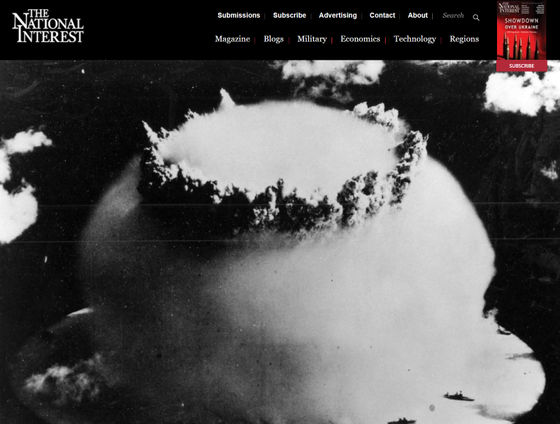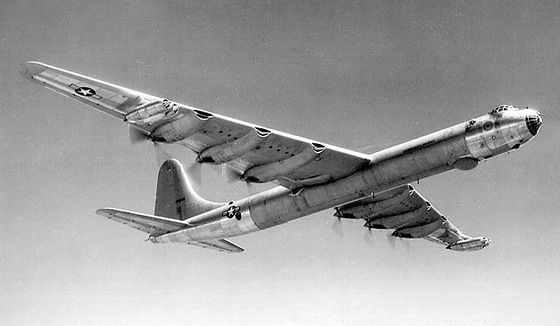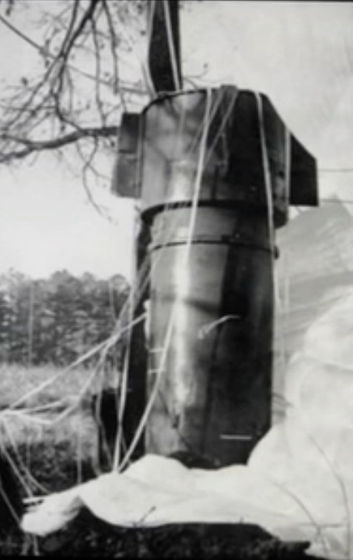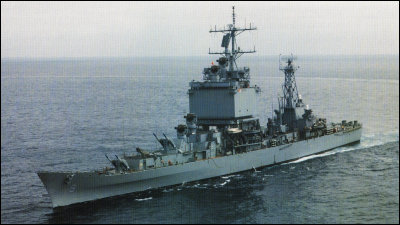In fact, the United States has lost six nuclear weapons, and one of the missing nuclear bombs is in the waters near Japan.

by
Although the United States strictly controls nuclear weapons , 32 cases of ' broken arrows ', which are accidental accidents of nuclear weapons including loss, have been reported between 1950 and 1980 alone. Moreover, six of the lost nuclear weapons have not been recovered as of 2023, and the oldest remains missing for more than 70 years.
The US Military Is Missing Six Nuclear Weapons |
https://nationalinterest.org/blog/reboot/us-military-missing-six-nuclear-weapons-180032

◆ Accident 1: February 13, 1950
The oldest of the six nuclear weapon loss incidents compiled by The National Interest, an overseas magazine, occurred on February 13, 1950. On this day, a U.S. Air Force B-36 strategic bomber was flying from Illson Air Force Base, Alaska, to Carswell Air Force Base, Texas, for a simulated nuclear attack training. You will run into trouble.
Due to concerns about crashing with nuclear weapons loaded, the Fatman type atomic bomb '

◆ Accident 2: March 10, 1956
The accident involved the loss of two nuclear bombs when a B-47 bomber en route to Ben Gerir base in Morocco from McDeal base in Florida crashed into the Mediterranean Sea. The B-47 completed the first of two refueling missions without incident, but exploded mid-air during the second refueling, killing all three crew members.
Accurate information has not been revealed, but the B-47 is said to have carried
◆ Accident 3: February 5, 1958
The accident occurred when a B-47 bomber collided with an F-86 fighter during a mock battle near Savannah, Georgia. The bomber, which had plummeted in altitude due to the accident, requested permission to reduce its weight and jettison its nuclear bombs to protect the crew from detonation during an emergency landing. Mark 15, which was approved and dropped in the Wassau Strait near the mouth of the Savannah River, was not found despite several searches.
In addition, the bomber who dumped the bomb succeeded in returning to the nearest base afterwards, and the pilot Colonel Howard Richardson was awarded the Distinguished Flying Cross for this achievement. Also, the fighter that collided with the bomber crashed, but the pilot successfully escaped and survived, so miraculously there was no human damage due to the collision.
◆ Accident 4: January 24, 1961
The accident, which occurred in Goldsboro, North Carolina, is documented as the 1961 Goldsboro Air Force plane crash . One of the two Mark 39 nuclear bombs carried by a B-52 bomber that crashed shortly after takeoff was found safely thanks to its parachute getting stuck in a tree, but of the four detonators Because three were working, it was said that it was about to become a catastrophe.

The other of the two bombs was buried in a mud field, and although subsequent drilling operations recovered the uranium and plutonium cores, most of the bomb remained in the ground. Therefore, as a last resort, the US military purchased an easement of land with a diameter of 400 feet (about 120 meters) centered on the falling point and took measures to prohibit excavation in the vicinity.
◆ Accident 5: December 5, 1965
The accident occurred on the aircraft carrier Ticonderoga, which was sailing 68 miles (about 109 km) off the coast of Kikaijima, Kagoshima Prefecture. It fell into the sea with a hydrogen bomb with an output of 1 megaton and sank as it was.
The US Navy only acknowledged the accident 15 years after the accident, and only pointed out that it occurred 500 miles (about 804 km) from land with the details hidden. However, it was later revealed that this was not the case and that it happened only 80 miles (about 128 km) from the Ryukyu Islands. In the wake of this accident, the Japanese government has banned the introduction of nuclear weapons into its territory.
◆ Accident 6: 1968
The reason there is no record of the exact date and time of the accident is because it was a submarine accident. The nuclear submarine Scorpion , which caused the accident, is believed to have sunk about 400 miles (about 653 km) southwest of the Azores Islands in the Atlantic Ocean in the spring of 1968. This killed 99 crew members and sank a nuclear warhead weighing up to 250 kilotons into the sea.
Since this accident, America has not lost its nuclear weapons for more than half a century.
Related Posts:
in Note, Posted by log1l_ks







